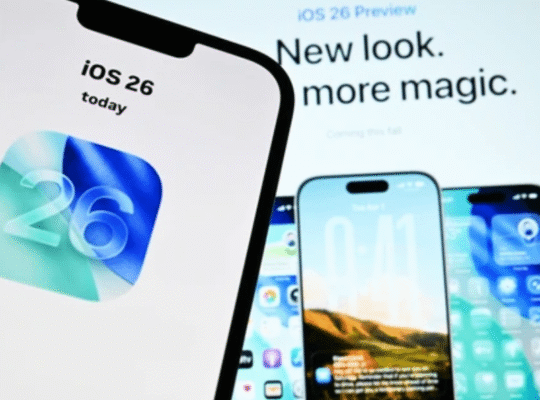Introduction
In the annals of tech history, Apple Inc. Shines brightly as a beacon of innovation, beauty, and disruption. While Steve Jobs and Steve Wozniak are household names, there remains a third co-founder who’s often overshadowed by the glare of the limelight—Ronald Wayne. His story isn’t always merely a story of a missed opportunity but one of introspection, resilience, and, in the end, reinvention. Wayne, frequently dubbed “Apple’s forgotten co-founder,” played a pivotal early role in the organization’s founding; however, he selected a direction that diverged from Silicon Valley stardom. Today, his legacy is being retested through the lens of craftsmanship, individualism, and considerate innovation.
Wayne’s adventure from era to suave entrepreneurship paints a nuanced image of what it method to pursue private success over fortune. This blog explores the lesser-regarded narrative of Ronald Wayne, tracing his early involvement with Apple, his departure from the organization, and his sudden return to public cognizance as an image of thoughtful innovation. His comeback—rooted now not in billion-dollar tech ventures but in small-scale innovative hobbies—offers a clean counter-narrative in a global captivated with scale and valuations.
The Early Days of Apple and Wayne’s Involvement
In 1976, Apple Computer Company was founded in a small garage using three individuals: Steve Jobs, Steve Wozniak, and Ronald Wayne. While Jobs added imagination and prescience, and Wozniak brought the engineering brilliance, Wayne changed into delivering to provide adulthood, shape, and commercial enterprise acumen. At the time, Wayne changed to working at Atari, where he had formerly collaborated with Jobs. Given his older age and business role, he was seen as a stabilizing figure in what turned into otherwise a volatile startup task.
Wayne was tasked with drafting the company’s first partnership agreement and designing Apple’s first emblem—an in-depth etching of Sir Isaac Newton sitting under an apple tree. More importantly, he provided an experience of order to the chaos of a budding startup. As the tie-breaker in the event of disputes, Wayne held a ten stake within the agency; however, his position was in no way intended to be operational or lengthy-time period.
Despite these contributions, Wayne’s tension about the economic viability of a brand-new enterprise led him to withdraw just 12 days after Apple was founded. He bought his 10% stake for an insignificant $800 and later received a further $1,500 to relinquish any destiny claims. The choice might go down in history as one of the most financially consequential walkaways in corporate America. Yet, Wayne’s exit becomes grounded in a rational fear—he has personal property to lose and becomes cautious of the monetary burden.
The Departure and the Legend That Followed
Ronald Wayne’s departure from Apple has turned out to be something of a legend in Silicon Valley folklore. Hindsight frequently frames his decision as a huge misstep, but a closer examination reveals a person acting pragmatically based on the facts and responsibilities he confronted at the time. He had seen failed ventures earlier and understood the high mortality rate of startups. His desire becomes rooted in self-protection, not loss of foresight.
Following his departure, Wayne returned to a more traditional career route, operating inside the gaming enterprise and continuing to pursue his hobby in engineering and product design. He ultimately retired from the tech quarter and led a quieter life in Nevada, a long way removed from the repute and fortune his co-founders would come to embody. While Apple soared to international dominance, Wayne remained grounded in a lifestyle of modesty and quiet reflection.
The tale of Ronald Wayne has become symbolic for lots of marketers—an embodiment of danger aversion in a discipline pushed through ambitious leaps. His narrative becomes frequently revisited in media coverage, regularly framed as a cautionary story approximately the cost of conservative thinking in high-growth environments. However, this view frequently does not note the nuanced human elements of his tale, consisting of the burdens of responsibility, the uncertainty of startups, and the very real worry of monetary spoil.
Rediscovering Purpose Through Craft and Creativity
Years after Apple became a tech massive, interest in Ronald Wayne’s story started to surge. However, rather than returning to the tech enterprise or seeking restitution, Wayne launched into a unique journey—one rooted in craftsmanship, writing, and character expression. He started to channel his creativity into designing coin-operated slot machines and penning books on philosophy, American history, and the human experience.
Rather than lamenting his past, Wayne embraced it. He has become a speaker and writer, the usage of his story as a lens through which to discuss broader issues of innovation, risk, and personal integrity. His books, which include an autobiography and works on political philosophy, replicate a deeply highbrow mind that sought meaning past cash and media headlines.
One of the most exciting aspects of Wayne’s comeback is how it exemplifies a broader definition of innovation—one now not restricted to virtual transformation or billion-dollar valuations. His handcrafted slot machines and elaborate designs displayed his enduring love for mechanical ingenuity, a throwback to the roots of American inventiveness. In an increasingly more rule-driven world and code, Wayne’s commitment to physical, tactile creation offered a refreshing assessment.
Through this work, Wayne became something of a cult determined—no longer because he constructed some other tech empire, but because he stayed true to himself. His comeback becomes no longer approximately the truth, but approximately maintaining that innovation can be personal, philosophical, and deeply human.
Public Reappraisal and Late Recognition
In recent years, public interest in Ronald Wayne has shifted from ridicule to recognition. As media outlets revisited his tale with more empathy, audiences began to realize the wider message his existence represents: that there may be no singular path to achievement. Wayne started receiving invitations to speak at conferences, universities, and innovation summits. His insights, laced with knowledge and humility, struck a chord with audiences upset by the hyper-commercialization of the tech enterprise.
What’s specifically noteworthy is that Wayne never expressed bitterness approximately his selection. In interviews, he maintained that he made the right choice for himself at the time, and he stands by it. His popularity in his position in Apple’s records, blended with his contentment with later interests, multiplied his narrative from a footnote to a full bankruptcy within the story of Silicon Valley.
Wayne’s resurgence also highlights the importance of mental safety in entrepreneurship. His reluctance to shoulder the economic hazard speaks volumes approximately the emotional toll that innovation can take. In spotting his tale, the startup world started out to embrace an extra compassionate view of what it manner to be a founder or early worker, acknowledging that not everyone can or needs to undergo equal tiers of chance.
Lessons in Integrity and Individualism
Ronald Wayne’s life gives valuable lessons for nowadays’s aspiring innovators, particularly in a technology that glorifies velocity, disruption, and constant ambition. His selection to leave Apple, whilst financially steeply priced, became rooted in a strong feeling of personal responsibility. He did not desire to be a passive companion in a volatile task, nor did he need to threaten his economic balance for something he no longer fully controlled. That stage of self-awareness is rare and commendable.
Wayne’s journey underscores the significance of aligning non-public values with expert selections. For him, peace of thought and intellectual success took precedence over fame or fortune. In many ways, his tale is an antidote to the burnout and intellectual strain confronted by means of many in today’s hyper-competitive startup way of life. He serves as a reminder that success can be described in your terms and that being on foot away isn’t always the same as giving up.
Moreover, Wayne’s later pastimes replicate a commitment to craft and intensity. In an age where innovation often iterates faster or scales aggressively, his paintings invite us to take into account the cost of doing something properly, even though it is small, analog, or unconventional. His tale resonates with individuals who seek to create not only for income, but for a reason.
Craft Innovation as a Legacy
As the tech international continues to evolve, testimonies like Ronald Wayne’s function as vital counterpoints to dominant narratives of disruption and unicorn valuations. Wayne’s legacy lies not in a neglected payday, but in a return to the roots of innovation—craftsmanship, curiosity, and character. His lifestyle suggests that innovation does not usually have to be loud, worldwide, or virtual. It can also be quiet, nearby, and deeply meaningful.
In many respects, Wayne’s craft-primarily based ventures are themselves acts of innovation. They repurpose traditional engineering principles for contemporary amusement, they combine design with records, and they offer tactile alternatives in a virtualized world. In doing so, Wayne has carved out a spot that is uniquely his own, inspiring others not to forget the long-term pleasure of significant work over short-term benefit.
As interest in sustainable entrepreneurship and aware innovation grows, Wayne’s tale is becoming increasingly more relevant. His paintings represent a bridge between the analog past and a virtual future, showing that there may be room for both. By reframing his adventure from certainly one of loss to one of rediscovery, we start to apprehend the proper cost of legacy, not simply in what we construct, but in how we live.
Conclusion
Ronald Wayne might also have stepped far away from Apple; however, he by no means walked far away from innovation. His journey, marked through thoughtful choices and a deep dedication to private values, serves as an effective reminder that achievement isn’t always one-size-fits-all. By transferring his awareness from tech empires to handmade creations and highbrow hobbies, Wayne has redefined what it means to have a legacy.
His comeback isn’t measured in dollars or IPOs but in the authenticity of his selections and the foundation his tale brings to others. In honoring his course, we honor a broader, richer definition of innovation—one that celebrates integrity, craft, and individualism. For the ones navigating their crossroads, Ronald Wayne’s life gives a beacon of readability: occasionally, the bravest pass is not in going huge, but in staying proper.
Frequently Asked Questions (FAQs)
Q1: Who is Ronald Wayne, and what was his function at Apple?
A: Ronald Wayne turned into the 1/3 co-founders of Apple Inc., along with Steve Jobs and Steve Wozniak. He helped draft the unique partnership settlement and designed the first Apple brand. Though he had only stayed with the corporation for 12 days, his position became important throughout its inception.
Q2: Why did Ronald Wayne leave Apple?
A: Wayne left Apple because of issues over private monetary legal responsibility. As the oldest and most financially established of the trio, he became cautious of the dangers of an unstable startup and chose to sell his 10% stake for $800.
Q3: What has Ronald Wayne finished on account that leaving Apple?
A: After leaving Apple, Wayne pursued a profession in engineering and later shifted consciousness to writing and craftsmanship. He authored books on philosophy and history, and designed difficult coin-operated machines, embracing a lifestyle of creativity and highbrow success.
Q4: Is Ronald Wayne remorseful for leaving Apple?
A: Publicly, Wayne has said that he no longer regrets his selection. He believes it has become the proper preference for him on time and values the life he built later on, one rooted in peace and private authenticity.
Q5: What can marketers study from Ronald Wayne’s story?
A: Wayne’s tale teaches that achievement can take much paperwork. It highlights the importance of self-awareness, private integrity, and aligning expert decisions with one’s values. His adventure also challenges the perception that economic advantage is the most effective measure of fulfillment.
Q6: How is Ronald Wayne’s story applicable these days?
A: In a global environment increasingly more targeted on scale and speed, Wayne’s emphasis on craft, private fulfillment, and intellectual pursuit gives a refreshing alternative. His story resonates with those seeking significant innovation outside the doors of mainstream tech tradition.
Disclaimer
Created with the Synergy of AI innovation and through research, this article is intended to offer clear, accurate, and actionable insights. Each point has been double-checked to ensure it adds genuine value to your knowledge base. Our mission is to guide you with reliable, easy-to-understand information. Enjoy your reading experience and continue exploring new ideas!






